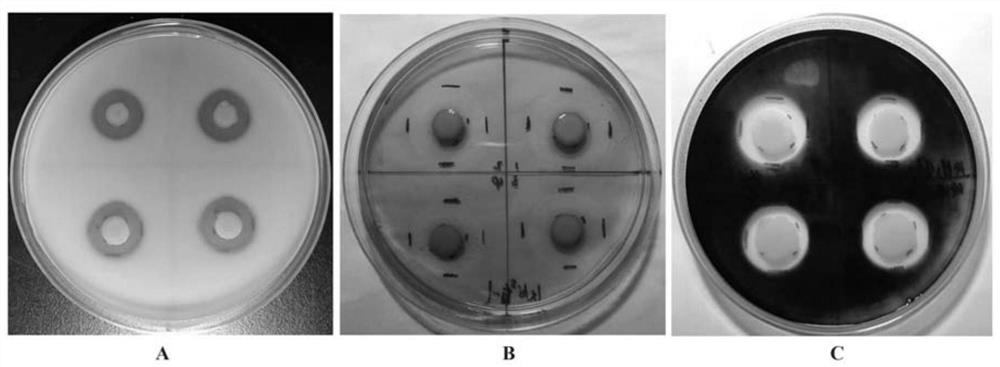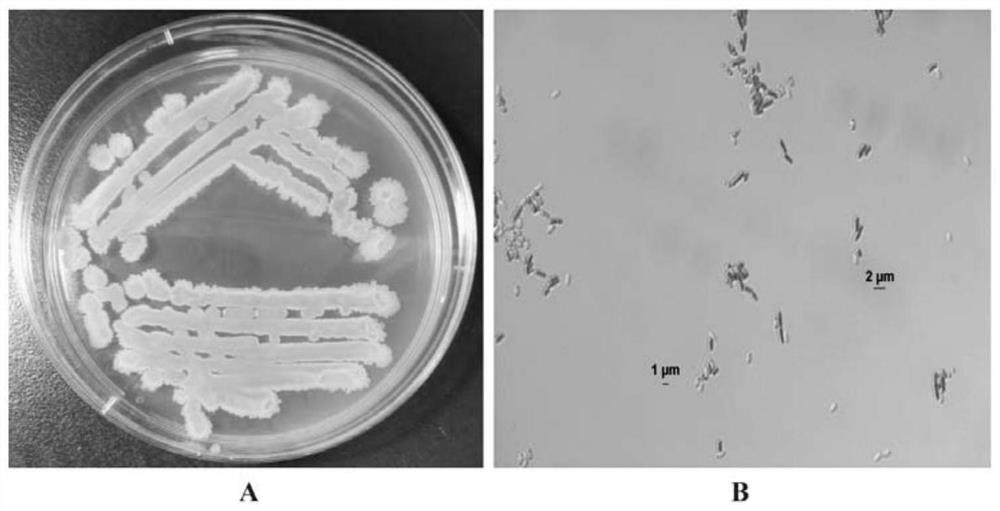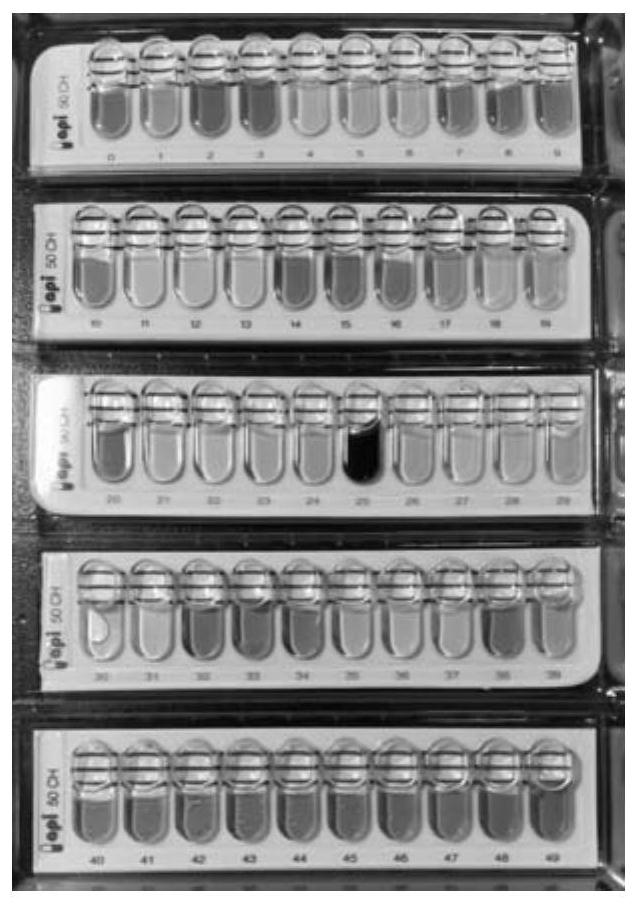Bacillus velezensis capable of producing high-yield compound enzyme and efficiently degrading mycotoxin and application of bacillus velezensis
A technology of bacillus and bacteria agent, applied in the field of agricultural biology
- Summary
- Abstract
- Description
- Claims
- Application Information
AI Technical Summary
Problems solved by technology
Method used
Image
Examples
Embodiment 1
[0073] Example 1, the screening and identification of Bacillus LB-Y-1
[0074] 1. Screening of strain LB-Y-1
[0075] 1. Primary screening of strains
[0076] Thirty-five cases of digesta samples from the rumen of dairy cows, chicken cecum, pig ileum, and rabbit cecum that were healthy and in good growth condition were collected for screening the target strains. The specific method is: take 10 g of each of the above samples, dissolve them in 90 mL of sterile PBS solution, shake at a constant temperature of 160 rpm for 20 minutes, absorb 500 μL and transfer them into 5.5 mL of NB liquid medium, and incubate at a constant temperature of 160 rpm at 37 °C for 24 hours, and then Take 100 μL of bacterial liquid, inoculate in 5.5 mL of Hormisch liquid medium, gradually increase the content of coumarin from 1 to 3 mg / mL, and culture at 37°C and 160 rpm for 48 hours to enrich the strains. After 5 times of enrichment, the culture solution was diluted and spread on NB solid medium (dil...
Embodiment 2
[0096] Embodiment 2, the ability of Bacillus velesi LB-Y-1 to produce protease, cellulase and amylase
[0097] 1. Protease-producing ability of Bacillus veleisi LB-Y-1
[0098] 1. Draw the L-tyrosine standard curve: pre-configure 0.1mol / L HCL solution as the solvent, and use 10μg / mL as the gradient difference to prepare a tyrosine standard solution with a concentration of 0-70μg / mL. Take 1mL of the above standard solution and 5mL of 0.4mol / L Na 2 CO 3 Mix the solution with 1mL of Folon-Phenol reagent, and measure the absorbance at the wavelength of 680nm with a UV spectrophotometer after bathing in water at 40°C for 20min, and draw the OD of L-tyrosine 680 The relationship between concentration and concentration.
[0099] 2. Prepare the seed solution according to the method in Example 1, inoculate the seed solution in fermentation medium A, and culture at 37° C. and 160 rpm / min for 36 hours.
[0100] 3. After completing step 2, centrifuge at 4°C and 8000 rpm for 15 minutes...
Embodiment 3
[0123] Example 3, the effect of Bacillus velei LB-Y-1 on the growth performance of broilers and the diversity of intestinal microorganisms
[0124] 1. Feed test of broiler chickens with different gradients of Bacillus LB-Y-1
[0125] Select 300 1-day-old healthy Aiba Yijia broiler chickens (AA broilers), and randomly divide them into 5 treatment groups, each treatment group has 6 replicates, and each replicate has 10 chickens, and each group is the control group CON, shellfish Bacillus lesii group BV1, BV2, BV3 and antibiotic AGPs group. The CON group was fed with basal diet; BV1, 2, and 3 groups were sprayed with Bacillus Veles suspension in the basal diet, so that the bacterial concentration in the basal diet was 1.0×10 7 CFU / kg, 1.0×10 8 CFU / kg, 1.0×10 9 CFU / kg; AGPs group added combination antibiotics (chlortetracycline 100mg / kg, kitasamycin 20mg / kg) in the basal diet. The basal ration was a corn-soybean meal ration, and the formula design was based on the "Chicken Feedi...
PUM
 Login to View More
Login to View More Abstract
Description
Claims
Application Information
 Login to View More
Login to View More - R&D
- Intellectual Property
- Life Sciences
- Materials
- Tech Scout
- Unparalleled Data Quality
- Higher Quality Content
- 60% Fewer Hallucinations
Browse by: Latest US Patents, China's latest patents, Technical Efficacy Thesaurus, Application Domain, Technology Topic, Popular Technical Reports.
© 2025 PatSnap. All rights reserved.Legal|Privacy policy|Modern Slavery Act Transparency Statement|Sitemap|About US| Contact US: help@patsnap.com



